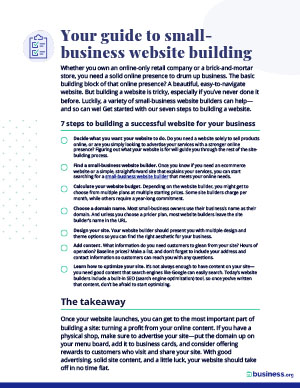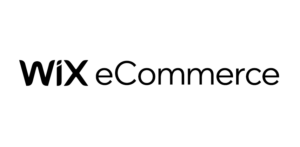We are committed to sharing unbiased reviews. Some of the links on our site are from our partners who compensate us. Read our editorial guidelines and advertising disclosure.
The Complete Guide To Starting An Online Business
Starting a business is sometimes scary and almost always challenging. It might seem overwhelming at first, but that is completely normal. And we owe you a massive congratulations. You have an idea good enough to share with the world, and that’s a big deal! You’ve officially gone further than most hopeful entrepreneurs. You’ve made the decision to get online and figure out how to turn this idea into a money-making business. So, let’s talk logistics.
When I first started my own business, I panicked over taxes, finances, and marketing. I felt so behind that first year because I didn’t have anything figured out before launching my site. Then, when I did launch, I had to check all these boxes while I was knee-deep in the stress of maintaining my business. I had no idea which holes I hadn’t filled until they imploded and quadrupled my stress, since I had to put out fires that were completely preventable.
To help you avoid the same mistakes I did when I launched my business, we've put together this guide to starting your small business online. Read through our eleven steps below to officially start your business off on the right track.
How to Launch a Small Online Business
1. Vet your idea
First things first: you gotta vet your idea.
Before jumping in head first, you need to be 100% confident (or at least 90%) confident that your idea is worth it—worth the time, sacrifice, stress, anxiety, frustration, and ego hits.
It’s worth remembering that no matter what type of business you own (or how good your idea is), you’ll definitely experience ups and downs within the first 10 years. Some of these ups will be sky-high, and some of these downs will be depressingly low.
But if you believe in your idea enough, you will persevere—you can absolutely come out the other side with an awesome business, which is an amazing way to spend your time and earn a living. On the other hand, if you’re shaky about your plans, this will be a tricky first decade for you. To make sure you’re on the right track, let’s talk about how to vet an idea:
While vetting your business idea, ask yourself these five questions:
- How big is your potential audience? Are enough people interested in this type of product or service that you have a stable audience for sales?
- Is your product or service something customers buy once and move on? Or is there a chance for building a repeat customer base?
- Is your business idea going to be a passing trend like low-rise jeans, or does it have a long-term possibility like pencils?
- What is your competition? For instance, if you are setting up a fry bread cafe, are there other fry bread cafes in the area? If there are, what unique element will set your business apart from the competition?
- Will your business have any legal issues or limitations? For instance, are you creating something with strict regulations that make it trickier to market? Are you passionate enough about your idea that you’re willing to deal with the ups and downs and chaos of starting a business?
Once you’ve vetted your idea by asking yourself the questions above, getting advice from people you trust, and even speaking with an accountant or business banker about your business’s viability, it’s time to move on to the fun stuff—like choosing a name for your budding business.
By signing up I agree to the Terms of Use and Privacy Policy.
2. Identify your audience (or your target market)
Arguably, the most ignored aspect of building a business is identifying a specific audience. A lot of fresh entrepreneurs hesitate to hone in on one demographic because they believe their product or service can and should help everyone. Depending on the product, that might be true—but it still creates a watered-down, generic brand that doesn’t catch anyone’s attention of anyone.
Our advice? Don’t fall for the trap of thinking everyone is your audience. There’s no way you can market to everyone and still have a unique brand.
In contrast, if you are clear on who you are selling to, then you will attract people who actually want your product—which means your business is likelier to last.
To take this a little further, remember that the best brands are aspirational. In other words, while you should start with the people who want your product, you should eventually expand into finding people who want to want your product. This means you will inherently cast a wider net than just your target market—but you will not catch much of anyone without a target market. Start there.
If you can really hone in on exactly who your dream customer is, you then know how to market your product to them. A good exercise to do here is to write your dream customer’s profile or buyer persona:
- What is your ideal customer’s name? Age? Occupation? Hobbies?
- What food do they like? What food do they dislike?
- Do they have a family?
- How much money do they make, and how much disposable income do they have? What are their hopes and goals?
Now, ask yourself: Does a person like this actually exist? If so, now you know which social media platforms to target, where to buy ad space, and what tone your advertising should take.
Having a hard time answering the questions above? Start by identifying who is not your audience. List the qualities of the person who is not your target audience, and narrow things down from there.
Again, you can have more than one target audience, but you should try to be as specific as possible for each one.
3. Choose your business name
Choosing a business name is where the fun starts. For one thing, your business’s name is the first point of contact between your business and your consumers. It also gives customers the first glimmer of your personality and is the place where your branding will shine.
Remember, your name is also how the legal world will note your business. It also helps Google determine how to position your website when someone searches for your product or similar product on the internet. If your name is confusing, long or even too similar to other business names, you might be positioned at the bottom of the search results page.
In other words, your business’s name is important.
When it comes to business names, entrepreneurs tend to overthink, overthink, and, overthink some more. Sometimes, it feels like the trickiest part of starting a business, so here are some tips for figuring out the perfect name.
Keep it simple and short
Shoot for one to two words. You don’t want the name to be a chore for your customers to remember. Make it as easy as possible for your customers to think only of your service or product when they hear your name. You also want the name to fit neatly on a price tag or as a hashtag (always keep that social media marketing in mind)
For a good example of a short, simple brand name, consider Macintosh computers and Apple products. When someone says the word “apple,” most people now think of the computers before they think of the fruit. It’s a simple name, but with excellent marketing, the company completely co-opted the fruit.
Dare to get personal
Don’t be afraid to think of something quirky, weird, and maybe even a little kooky. For instance, many small online clothing businesses include the name of the owner’s grandmother in the title, or maybe of the owner’s children who inspired the clothing.
Or if something from your hometown (or even a particular food) means something to you, consider including that as part of the name. This type of personality flair makes marketing the founder’s story even clearer (read: makes you more marketable). It’ll also provide an easy framework for storytelling within your marketing plans.
These personal details will also help customers feel a sentimental connection to the brand. Sentimentality is an effective tool for building loyalty.
Be original
Make sure there are not other companies filed under the same name or an adjacent name. You don’t want to confuse your potential customers or investors, and you also don’t want to confuse Google, which might pull up your company’s name and location while filling in product information from a completely unrelated company that happens to share your business’s name.
Search domain names, URLs, and social media handles for your would-be business name. Don’t forget to simply Google the name either. If you are dead set on your chosen name, consider tweaking it a little just to set it apart.
4. Write your business plan
Your business plan is a structured document that gets all your brilliant ideas down on paper. You’ll show it to investors (like angel investors or traditional lenders like banks) to demonstrate that your ideas are worth investing in. While you can modify your business plan from year to year, try to think about it as your business’s foundational document—this is how you design the path to making your dream work.
You can create your business plan as early or late as you want before launching your business, but I highly recommend doing this early because it will reveal any flaws in your idea. The plan itself might feel redundant, but don’t speed through this. Consider it a proposition for the world to take your idea seriously.
Executive Summary
This is your elevator pitch. Simply sum up what your business is, how it will function, and what success you anticipate. It should be brief and to the point.
Company Description
This section should be a detailed description of what problems your company solves. It should also focus on who your company is serving and how you are serving that population.
Market Analysis
Who is your competition? Your investors will want to know you’ve done the research to find out that yours is a good idea, or that there is even a demand for this service or product. Along with showing that there is competition, this section of your business plan should point out what the competitors are doing better than you—and what you plan to do better than your competition.
Management and Organization
What kind of business is this? Is it an LLC, INC or DBA? How big is your business, and what is its structure? Most any business structure is fine—but remember: remember...stay away from pyramid schemes. (We say this mostly because they’re pretty similar to illegal pyramid schemes, but also because they can take advantage of women and marginalized populations.)
Products and Services
What exactly are you selling? List out each product, including each variation of your main product or service, as well as your pricing. Keep this portion of your business plan as clean and organized as possible (a spreadsheet will likely be a useful tool here). You will probably add to this list as you launch your business and continue to grow.
Marketing & Sales
How do you plan to let people know what you are selling? Many business owners use social media, local newspapers, radio ads, billboards, or even a combination of everything. The point is that you need to have a plan.
Another angle to consider is what medium your audience primarily uses. For instance, if you’re focusing on a product that primarily serves older communities, you’ll want to focus on Facebook advertisements. If you’re focused on a younger population, TikTok ads will probably serve you better. Consider how you can use your audience’s preferred same media to get your message across. And what sort of posts or commercials will you create that both fit your brand and speak to your dream consumer?
Funding Requests
Outline your funding requirements. This is where you get specific on how much you need and how each dollar will be spent. It’s also where you explain the lending and investment terms you would like and whether you are looking for debt or equity. The more specific you are, the better. Answer basic questions like how long you’ll need funding and how exactly you’ll use it. Most importantly, be overly detailed and incredibly tedious with this information—investors prefer more information when making a decision about whether or not your business is worth their time and money.
Financial Projections
Because you haven’t launched your business yet, this is where you will keep track of your monthly and/or quarterly projections. Throw in graphs, charts, and anything else that will tell your financial story as easily and quickly as possible. This section can be updated and added upon after you launch, but you should definitely keep track of your financial projects throughout the life of your business. Set routine goals to keep yourself motivated and on track.
Keep your business plan close by and allow it to remain a living document as you grow and learn new things. Even if you never end up presenting it to anyone, it will keep you focused and aware of when things are not lining up for you.
5. Define your brand identity
Last year, I taught a business class to high schoolers., These were Gen Z brilliant students who knew the internet forward and backward. They used the word “branding” casually, but they didn’t quite understand the ins and outs of branding a company. So we did what I like to call “the Starbucks exercise.”
I asked them to get out a piece of paper and write their answers to my questions: If Starbucks were a person, what gender are they? Do they smoke? What age are they? Do they have a family? A partner? Kids? A dog or a cat? What kind of outfit is Starbucks wearing?
The majority of students had the same answers. To them, Starbucks was a white middle class lady who used to smoke cigarettes. She is a straight cis female with a couple of kids and a cat. She is stressed and she wears yoga pants a lot.
These students were all from different homes and all had different relationships with the coffee brand— but they all had the same general understanding of what this brand was. And that’s the power of strong, consistent branding.
If you can create a set understanding of what your company is if it were a person, you are golden. Creating a brand like this means you know exactly who you are marketing to. And having such a specific focus also means that you can attract the right customers. You will know which aspects of your company to negotiate in order to attract your target audience and expand from there.
What gender are they? Do they smoke? What age are they? Do they have a family? A partner? Kids? A dog or a cat? What kind of clothes do they wear? What is their income bracket? What type of music do they listen to?
Another helpful exercise is to try to describe your company with one word. Examples include: sleek, economical, efficient, retro, conscious, powerful, and rejuvenating. Practice this with your own business, and then make branding decisions based on that word.
Now that you have an understanding of what your brand is, consider your unique selling point, words, colors, and logo.
Figure out your unique selling point
What makes your brand different from other brands? Why should people choose your service or product over others? Is there an emotional reason (for instance, you’re a local, naturally sourced brand), a practical reason (maybe you’re more affordable or offer higher quality products), or a combination of both? Frankly, if there is an emotional pull, run with that—people love an emotional connection to the product they’re buying.
To put it simply, think about your origin story and what YOU bring to the table. Then go from there.
Colors
Colors are important! They should work together to make a good story. They should not be in a contest with each other. If you look at your branding and feel confused or disturbed, it means that the colors are not doing you favors.
Not sure what we mean by that? Well, there is an area of study called color psychology. This is how our brain responds to certain colors.
For example, yellow is a trigger for discomfort and red is a trigger for hunger, which is why most fast food places use red and yellow in their branding. These colors are intended to inspire patrons to come and eat a lot (red) and then leave quickly because the yellow is so glaring. Blue is calming which is why most therapy offices paint their walls blue.
Consider what emotions you want your clients to feel and Google which colors best make that happen.
Color theory also tells you which color combinations are most pleasing to our eyes. A fun resource is the Adobe color wheel. This site allows you to jump in and look at different combinations of colors that work within these theories of which colors are most compatible.
Words
This is where you get to tell your story. Use words that fit the tones of the colors you choose (or vice versa). Words like sleek, organic, fresh, and honest all feel good with greens, light pinks, and whites. Words like powerful, strong, and forthright match the tones of reds and blacks. Consider which words best describe the mood you are trying to convey.
Logo
Unless you have a design background and are good with graphic design, consider hiring someone else to design your logo. Before hiring someone, your job is simply to figure out a basic idea of what you want. This will require you to look at different branding, websites, and fonts to think about what really resonates with you.
When I was trying to sort out my own branding, I came across an Instagram profile that posted old Russian products with pre-1990 branding. My family comes from Eastern Europe and many of my family members speak Slavic languages, so seeing these unique logos and fonts felt familiar to me. I decided to hire a designer who created a font that could have come straight from old cheese cans from Moscow 1955, something with a Slavic touch and retro vibe. You never know where you will find inspiration.
- Old branding. Look at old magazines or old boxes and just study those fonts and how the logos were made.
- Notice t-shirts.
- Whenever you find yourself in a waiting room or watching tv, jump on Pinterest and create different boards of ideas or tones.
- Start following different designers on social media. A popular one is Aaron Draplin, and from him you should be able to find an entire community that posts different design and logo ideas. This should inspire you as you figure out what you want.
- Album covers. Go to a record store and sort through different old school album covers. You will see some of the best branding there has ever been.
- Instagram, Instagram, Instagram. We love to hate it, but if you tap into the design community, you will be blown away by the options.
- The grocery store. Andy Warhol found art in advertising and sold his Campbell’s Tomato Soup renderings for millions of dollars. He described the soup can as brilliant art and branding. Go to the grocery store, pretend to be Andy Warhol, and look for art in the mundane.
6. Build your website
Whether you’re offering a newsletter or a physical product, you need to start creating a site so you can fund your business and find customers.
To start creating your ideal website, start by asking a few key questions. What is the purpose of your site? Are you selling or just giving information? Does your site include a call to action like signing up for a newsletter or service? Or do you need an e-commerce site to collect credit card information and shipping?
A ton of different website building platforms are built for small online business owners like you. With services like Wix, Squarespace, and Weebly, you can create a site and keep it dormant before launching for testing.
Not sure how to build a website from the ground up? Find other websites that are doing similar things to you and follow their lead. It is okay to gain inspiration from multiple sources. (Just don’t copy and paste an entire site. Plagiarism will not go well for you.)
Start simple. You don’t have to have a perfect product right away. Create a basic website, then have a friend go through it and tell you what they would love to see or use.
As you start creating your site, Just make sure you have these basics:
- A site map
- High-quality images
- About page
- A call to action on each page (“sign up for our email,” “click to purchase,” etc.)
- A contact page
You’ll also want to use proper SEO (search engine optimization) for any blogs and sites you create. If you’re not sure what that means, no worries—most website builders include some sort of SEO recommendations that will help optimize your content.
SEO is an acronym for “search engine optimization.” It is the method in attracting a higher quality and quantity of traffic to a site.
The goal of SEO is to make it easier for Google to recognize what your site pages are about and then help users find the best solutions to their needs.
Tips:
- Figure out where your site stands in terms of Google rankings. Use the Google toolbar or other monitoring tools (there are a lot).
- Use keywords or phrases organically throughout your pages. Use keywords that people might be including in their searches. Feel free to Google your topic and see what other people are posting or searching.
- Include these search terms in your URLs.
- Attach descriptors to your images.
- Use internal links to guide users to another page on your site.
- Link to other sites or the site you are sourcing information from.
- Make sure that your website is updated regularly and actually has high-quality information.
7. Test and validate your product
Test your product
Before launching and advertising, you must test your product and see if it is actually meeting the needs it is setting out to meet. You can do this in the form of focus groups, which means sending the product to a few choice people who you know will be honest about their impressions. Then you can start sending and giving to others. Find a bigger audience by inviting people from your focus group to pass your product along to their friends and ask for their feedback as well.
Validate your product
Before really going crazy with scaling and production, you must validate the product. This means setting up pre-orders and selling in person (read: starting off small before you buy 6.000 scrunchy leopard print bracelets that will just sit in your garage). Produce a few items and try to sell them. If you can’t move those few, there is no way you will move 6,000.
Validating your product tests whether your idea actually does have legs and whether you are the right person to move it forward. This can also be done by setting up pre-orders, launching a crowdfunding campaign, or selling person to person. Each of these tactics can act as a thermostat of where you are in meeting a need or want of your dream customer.
If your product is not a tangible thing and is content– or service-based, start promoting it through advertising. Consider offering a free service to get feedback before you start to sell. See what happens. Once again, if no one bites, it’s time to find another idea for your small business.
8. Nail down your processes for delivering your product
By now, you should have a good sense of your business’s organization, branding, and purpose. Now, it’s time to dig deeper into the nitty gritty part of building a company.
Let’s start by asking a few questions.
If you are using an online store to sell a product, ask yourself:
- Where are you going to store your inventory?
- Would you rather mail each product yourself, or should you outsource via dropshipping?
- Who is making your product?
- Are ethics and sustainability a part of your brand?
- Do you need design help and how long term do you need the help to be?
If you are selling a service, ask yourself:
- Exactly what service are you offering?
- What are your price points?
- What size of jobs are you accepting?
- What are you willing to negotiate with clients?
Whether you’re selling a product or service, we recommend getting support that can help you save time and money as you hammer out the logistics of running your business. Here are some of the most crucial tools to consider:
- Accounting software. We live in a wonderful time when there are trillions of options for different accounting apps. Different programs are tailored to different needs and include different price points as you grow. Check out our list of the best accounting software for small businesses.
- Email marketing. Email marketing benefits your SEO and builds trust with your customers—potential, past, and current. This is the one chance you have to speak directly with the people you are hoping to impact with your service. This is where you can ask them questions and remind them that you exist.
- Project management. If you are anything like me, you tend to procrastinate and get frazzled when things get off track. Just like accounting apps and software, finding the right project management tool can make a huge difference. We all work differently, so find the tool that makes the most sense for your brain and also your company’s needs.
9. Make it legal
Research licensing and government regulations
Different states have different laws on what’s legal to sell, where, and how. These regulations can be quite complex, and there may be legal problems if you make a wrong move.
Go ahead and Google your state laws. If you find any regulations that might affect your business, definitely reach out to your county officials and they can guide you. If you feel like your business is in a gray area, consider investing in a lawyer as you set up your business.
Pick a business structure
A business structure is integral both for filing your taxes and your own liability.
10. Get your finances in order
Dealing with finances is usually where first-time entrepreneurs start panicking. They have an awesome idea, but they didn’t major in accounting and have no idea what to do about money.
The first move is to figure out what accounting software you want to use(hopefully you figured that out in step seven).
Next, we need to draw the line between your personal self and your business self. Your business profile needs to stay distinct from your personal finances.
How do you separate the two? Just like how you have a social security number, your business needs its own identification number (this is called an employer identification number, or EIN) and bank account. Not only does this make sure you are not going to get into a jam with the IRS, but setting up a business EIN and bank account helps prove that your business is, well, yours. You will get your business identification number when you register your business with your state.
Next, you need to get a business bank account and credit card. Open an account that will work best for you, whether that is through using a high yield savings account or an account with limited fees. Make sure that you are checking your credit card statement and your bank account weekly so you can stay on top of cash flow.
Go to your bank and speak with someone about opening the right account for your needs. Your business banker will be your best friend—they can offer much better advice on different accounts and their benefits than anyone else.
Be mindful that most of your money will go quickly in the beginning. You will be spending it on building your inventory and trial and error with marketing. If those startup costs are too big for your pocketbook, consider finding angel investors or crowdfunding.
11. Launch your business
You’ve done it! You’ve gone through all the major steps to get your business off the ground, and now you’re ready to launch. Publish your website and start getting the word out by leaning into social media and other advertising methods-. Using your brand identity and chosen colors and logo, be liberal in sharing your new project with the world to find customers.
Most importantly, be confident. There will undoubtedly be ups and downs, but remember—you are providing something that people want. You’ve been through vetting and product testing and you know yours is a good idea. Hold onto that while you are weathering these early storms because yes, the initial phases are hard, but you’ve got this!
Phew, you made it to the end—nicely done! Thanks for sticking with us, and best of luck to you with your small business. We know you're going to do great.
Related content
Disclaimer
At Business.org, our research is meant to offer general product and service recommendations. We don't guarantee that our suggestions will work best for each individual or business, so consider your unique needs when choosing products and services.









